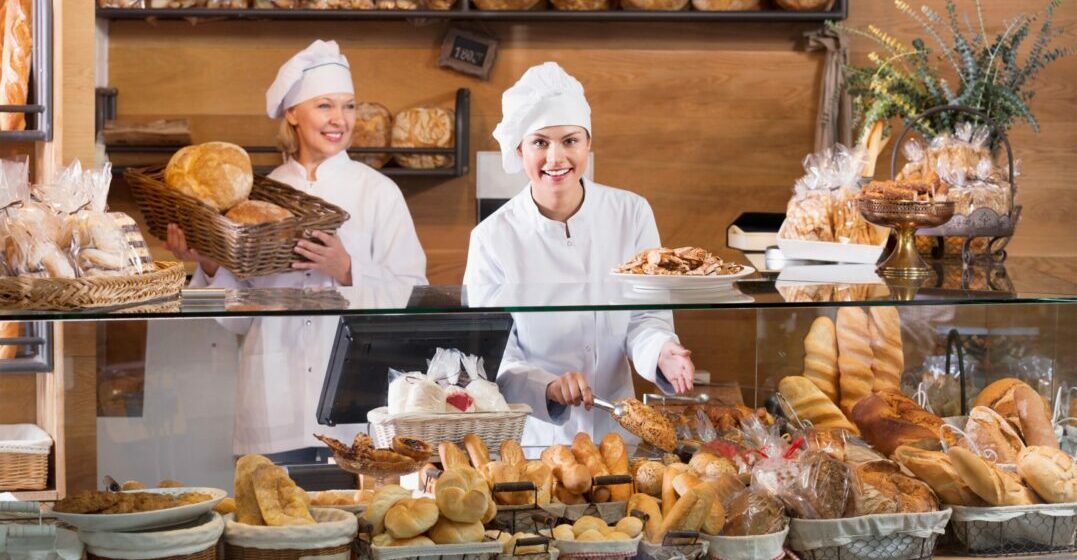Is there a typical German bread?

Germans take bread very seriously. Not only are there over 3,000 types of bread officially recognized by the German Bread Institute, but it can take up to four years of training to become a master baker in Germany. You can even train to be a bread sommelier, so you can recommend the best drink and bread combinations and hold forth on obscure regional bread varieties. But is there a typical German bread in a country with that many bread specialties?
- There’s more to German bread than rye
- Landbrot, Eiweissbrot – different types of German bread
- The famous German pretzel or Brezel
- Evening bread, bread boxes, and bread break
- Many words for the end of the loaf
- Bread is central to German culture
Learn languages at your pace
There’s more to German bread than rye
What is typically called ‘German bread’ outside of Germany is often a slice of rye bread. Breads made with a combination of rye and wheat flour are the most popular type of bread in Germany, making up nearly a third of all bread purchases. However, Germans also love Toastbrot, a square loaf of bread often called sandwich bread in English-speaking countries, as well as bread made with lots of seeds and nuts. It’s worth noting here that another German favorite, the Brötchen, or bread roll, isn’t counted in these official statistics from the German Bread Institute as it’s considered a ‘small baked good’. There are also many different regional names for the crusty white bread roll: Weck, Semmel, Schrippen, Kipf, Laabla, Rundstück, Brötli or Weckle are just a few.
Landbrot, Eiweissbrot and more – different types of German bread
Landbrot roughly translates to country bread, and there are many types across Germany, including Schwäbisches Landbrot, Paderborner Landbrot and Berliner Landbrot. It’s usually a crusty, round, rye-wheat loaf made with a sourdough starter rather than yeast. Eiweißbrot translates to protein bread, and contains at least 22% protein. These breads are packed full of seeds and nuts, and are naturally low in carbohydrates. However, don’t expect them to be fluffy like wheat bread!
| German bread type | English translation |
| Brötchen | bread rolls |
| Vollkornbrot | whole grain bread |
| Roggenbrot | rye bread |
| Weizenbrot | wheat bread |
| Sonnenblumenbrot | sunflower seed bread |
| Dreikornbrot/ Fünfkornbrot | three/five grain bread |
| Landbrot | country bread |
| Bauernbrot | farm bread (mixed bread with sourdough and yeast) |
| Eiweissbrot | protein bread |
| Pumpernickel | pumpernickel (dark, heavy bread made with 100% rye) |
| Dinkelbrot | spelt bread |
| Weißbrot | white bread |
| Mischbrot | mixed bread (can be a mix of different bread types e.g. wheat and rye) |
| Stuten | mares/ brioche |
| Brezel | pretzel |
The famous German pretzel or Brezel
Technically a ‘small baked good’, the Brezel has been a popular bread choice in Germany since Roman times. It’s pictured in the center of the logo of the Central Association of the German Bakery Trade, and many bakeries still hang a beautifully made iron Brezel outside their shops. You can find regional specialties across Germany, including the anise-flavored Anisbreze of Upper Franconia, the white Fastenbrezeln of Biberbach an der Riß, and the fat-bellied Brezel of Swabia. There are even sweet Brezel!
Learn languages at your pace
Evening bread, bread boxes, and bread break
Abendbrot, literally translated as evening bread, is a typical German dinner including sliced meats, pickles, hard-boiled eggs, sliced cheese, butter, and raw vegetables like tomatoes, cucumbers and bell peppers. This is served cold, and is a staple meal in German households all over the country. Even children’s school snacks involve the word Brot, with the small box they bring their food in called a Brotdose, or bread box, whether it contains a sandwich or not. A break at school or work can also be called a Brotpause, or bread break, as people would typically stop work to eat their bread. A Brotzeit is a break for a savory snack native to Bavarian cuisine.
Many words for the end of the loaf
What English speakers would call the ‘heel’, or that last slice of a loaf with one side of crust on it, has an incredible number of German names. Professional bakers call them Anschnitt or Abschnitt. In northern Germany, names include Knust, Knistchen, Knüppchen, and Knaust. In much of Bavaria it is known as the Scherzl. In central and southern Germany, it’s the Rand, Ränftchen, Rindl, and Rumptschn. In Swabia, it’s the Knäusle, Mürggel, Reibel or sometimes a Giggel, but just north in the Palatinate it’s a Knorze. In Thuringia, it’s a Feeze or Fietze, but in southern Thuringia it’s a Küppel. These are only a selection of the many regional terms for this piece of bread that people either love or hate.
Bread is central to German culture
With so many types of bread, intensive training to become a baker, and innumerable regional words for different types of bread, it’s clear bread holds a special place in the heart of German culture. While rye-wheat breads are popular, the little Brötchen or bread roll is a close second, with the famous Brezel also vying for the title of most typical German bread, but there’s no real way to choose the winner.










